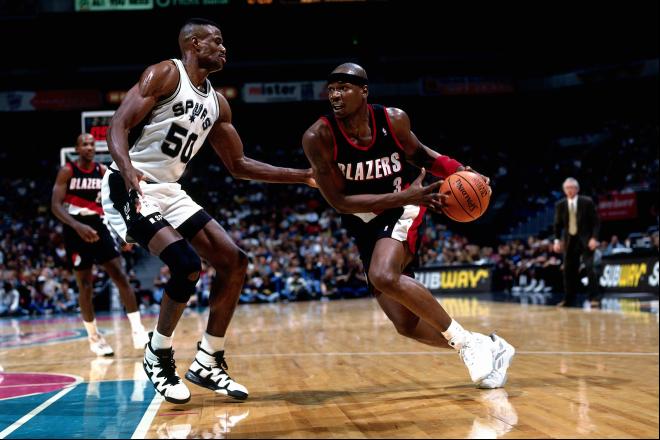In the early 2000's the stretch-4 phenomenon was established with Bigs like Dirk Nowitzki (PF/C) and Rasheed Wallace (PF/C) pushing the conventional midrange set up game to the 3-pt line. More than twenty years later what was once a niche position is now a mainstream position popular across the NBA.
"It's common to see big men shooting perimeter jumpers in today's NBA, but that wasn't the case 20 years ago. We spoke to some of the pioneers of the "Stretch-4" position that paved the way for today's shooting big men." -Patrick Hayes
We may be living in the golden age of the shooting big man. A trend that started decades ago with daring coaches who refused to be orthodox and conventional and took bold tactical risks.
One of these big shooters is Cliff Robinson. Robinson, played 18 NBA seasons carving a niche using his rare-at-the-time ability as stretch 4 and made more than 1,200 three-pointers in his career.
"For me, I always worked on that shot and had the confidence to take it if I was open," Robinson said. "A lot of times, you see big guys who work on the shot and who can make it in practice, but they don't have the confidence to take them in games. I always felt like if I'm going to work on this, I'm going to have the confidence to take it."
As the NBA has shifted focus from defensive to offensive and the value of the old-style Bigs that just clogged up the shooting lane has dried up. Those Bigs with this limited defensive capability have been relegated to off the bench energy role players.
The sands of time can seem confusing. One of the greatest rebounders of all time, Andre Drummond, is bouncing around teams. In any other era a Big that gets you 15 rebounds a night in his sleep is a multi-time MVP, but not in this era. What position would Moses Malone play today?
"When I was growing up, I was a fan of guard play, so I tended to gravitate outside," Robinson said. "Then, I just tried to combine inside and outside play. It's about having an overall presence on the floor. The more you do, the better chance you have of getting to play."
Cliff Robinson dared to be different. In an era where many coaches focused player's development on a narrow skillset defined by his position, Robinson saw past this and made the concerted effort to sharpen a broad set of strengths. As the transition that Robinson made became more commonplace, the narrow player traits of the previous era became a mismatch for today's NBA, as their narrow strength could be considered extraordinary, but their weaknesses went from weak to professionally appalling.
The modern NBA player has no extraordinary strengths, but the payoff is that they have no extraordinary weakness. They can do it all: handling, scoring, rebounding, post-ups, 3-pointers, play inside, play outside, etc. The form of the player is more all around in their skills but at the cost of less sharpness in their specialization of certain skills. It's not a jack of all trades versus a master, but rather a good-great master of all trades (Lebron James) versus a master of only one or two trades (Moses Malone - scoring/rebounding).
Both Lebron and Moses are multi-time MVPs but Lebron would work in any era. Malone was perfectly fit for just his time and would look out of place in today's era. This isn't to say one player is superior to another, but to make the overall point that the culture of the sport at the time affects the player in ways that often go undiscussed.
Imagine Manute Bol playing the modern game of today?!?!
The following chart shows the emergence of the new style Bigs, and how those that can shoot 3s have become more popular:






